Case Studies in Compliance: Environment Act 2021 Monitoring with the EXO Sonde
Background: The UK Environment Act 2021
The Environment Act of 2021 sets new, stringent standards for water quality in the UK to protect ecosystems and public health, requiring agencies to actively manage pollution sources. Section 82 mandates that all discharges meet specific contaminant limits and requires water companies to continuously monitor key parameters—like pH, turbidity, ammonia, and dissolved oxygen—especially around sewer overflows and treatment sites, to prevent harmful spills during heavy rainfall. You can read more about the Act in this blog, How the UK's Environment Act 2021 is Setting a Global Benchmark.
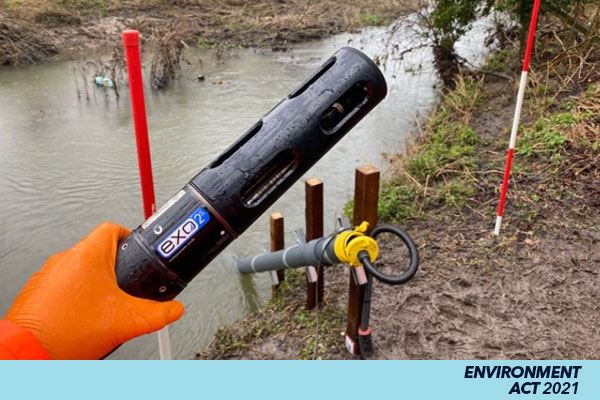
To demonstrate the benefits of continuous water quality data for compliance monitoring, Xylem UK worked with local water authorities to deploy several EXO Multiparameter Sondes at selected test sites. Each deployment site was connected to telemetry for real-time monitoring, utilizing HydroSphere, Xylem’s cloud-based data visualization platform.
HydroSphere allows not only for real-time site monitoring, but also customizable data dashboards and parameter-based Smart Alarms that alert when thresholds have been exceeded. Each case study described below presents unique site conditions and shows how real-time deployment data provides valuable insights, especially during storm events.
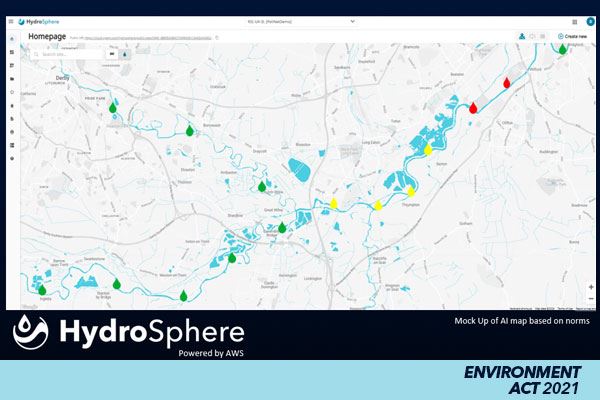
Case Study 1:
Monitoring Point: Downstream of Final Effluent
Parameters Measured: Temperature, Conductivity, pH, Dissolved Oxygen, Turbidity, Ammonium, fDOM
Trial Date: 2023
Xylem UK deployed an EXO2s sonde in a natural freshwater stream downstream of a final effluent discharge, with telemetry for real-time data. The sonde was equipped with six sensors: Conductivity/Temperature, pH, Dissolved Oxygen (DO), Turbidity, Ammonium ISE, and fDOM, plus a Central Wiper for anti-fouling. The EXO deployment was programmed with a 15-minute sampling interval for continuous data.
The sonde was installed in a PVC standpipe, both to prevent theft and vandalism, and also to enable safe retrieval of the sonde without entering the water.
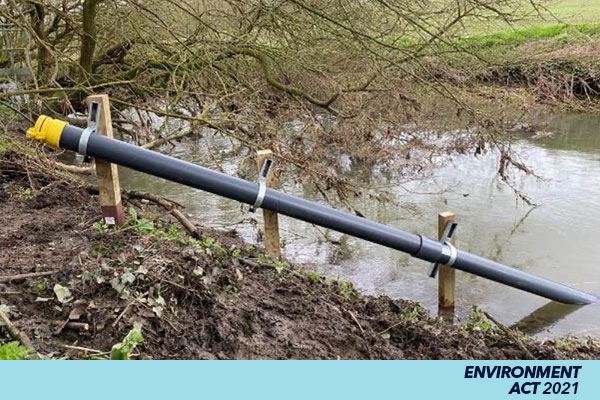
Sonde deployment tube downstream of final effluent.
On June 12th, 2023, a large fish kill event occurred and was heavily reported by the media.1 While Combined Sewer Overflows (CSOs) are often suspected as the cause, data reported by deployed EXO2S sondes, including the sonde monitoring effluent in this case study, exhibited the same results in three different catchments.
The data show a sudden increase in turbidity on June 12th. During this peak, dissolved oxygen and ammonium decreased (Figure 1). The conductivity and pH measurements also decreased, which is typically indicative of the impact of precipitation on natural water quality (Figure 2). This, combined with the increase in flow reported by a local gage station, confirmed the effect of increased flow due to a rain event. Similar events also occurred on the 19th and 21st of June.
The data indicate that turbidity increased due to runoff and resuspension of sediments due to the higher flows. As the bed was stirred, a large increase in Dissolved Organic Matter was observed. It is likely that the disturbances to the anoxic bed sediment increased Biological Oxygen Demand (BOD) causing the DO to decrease.
Ammonium, and the calculated parameter ammonia, which can be associated with wastewater, also decreased due to the dilution provided by the stormwater, rather than overflow of sewage which would have caused increased ammonium.
The EXO data provided sufficient evidence that this fish kill event was not caused by the water treatment works, but rather was a result of a rapid decrease in the available DO, causing stress and anoxic conditions.
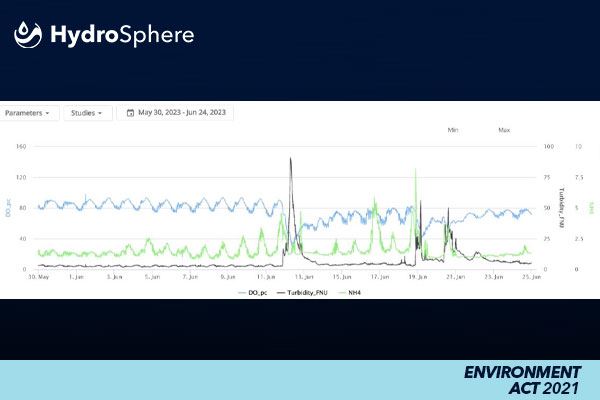
Figure 1. During a rain event, turbidity spiked, while DO and Ammonium decreased.
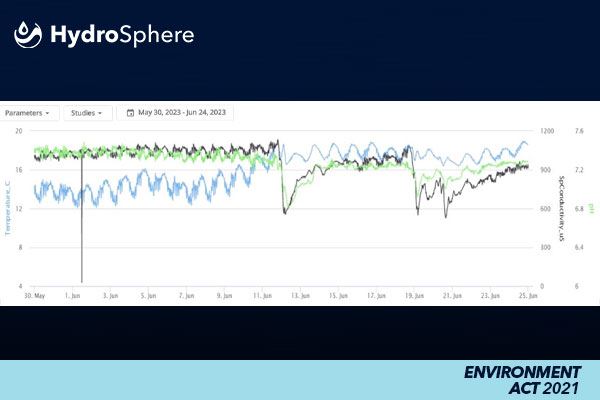
Figure 2. The combined decrease in pH and Conductivity is indicative of precipitation.
Case Study 2:
Monitoring Point: Upstream and Downstream of Sewage Pumping Station
Parameters Measured: Temperature, Conductivity, pH, Dissolved Oxygen, Turbidity, Ammonium
Trial Date: 2022
Sewage pumping stations transport wastewater through the treatment process, but some facilities use overflow tanks to accommodate increased flow during high-use periods and stormwater input. Overflow tanks have the potential to discharge untreated sewage into receiving waters when their capacity is exceeded by high flow. Ammonium is a water quality parameter that is commonly measured to monitor the effects of sewage on surface water.
Two EXO2s sondes were installed upstream and downstream of a sewage pumping station to monitor upstream water quality and the impact of the overflow tank during storm events. The Xylem Services team provided all of the instrumentation, telemetry, and regular site maintenance with HydroDaaS (Data as a Service). The sensors were calibrated in the laboratory, and field-deployed sensors were swapped with calibrated sensors every two months.
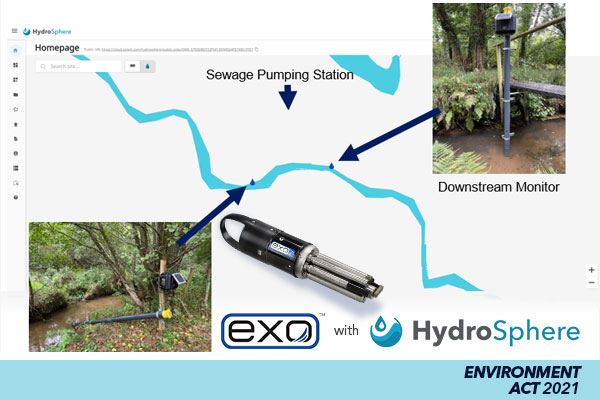
Locations of the upstream and downstream sites relative to the sewage pumping station.
Grab samples were collected by the water utility and then analyzed in the laboratory. The field measurements were compared against the lab data for accuracy. Parameters including Temperature, Conductivity, pH, Dissolved Oxygen, and Turbidity have a high level of accuracy against lab analyses and can be considered direct replacements for laboratory measurements.
On the other hand, although the Ammonium ISE directly measures ionic concentration, it is susceptible to interfering ions such as sodium and potassium and can have errors up to 0.5 mg/L when compared to laboratory results. Combined with the published sensor accuracy specification of ±2 mg/L, there may be limitations to using field measurements of ammonium for compliance reporting.
All sensors demonstrated good accuracy, sensitivity, and stability during this ongoing trial. As expected, the former group of field sensors reported data that was directly comparable to the laboratory samples with high accuracy (Figure 3), while the Ammonium ISE read approximately 0.2 mg/L higher than the laboratory data on average (Figure 4).
In practice, the Ammonium ISE has an observed accuracy of ±0.5 mg/L in low-ammonium natural environments according to repeated deployment studies completed by Xylem UK. Combined with the much higher error associated with the published accuracy spec of ±2 mg/L, and possibility of up to 0.5 mg/L of error due to interfering ions, the actual deviation of 0.2 mg/L of the Ammonium ISE compared to the lab data exhibits extremely high accuracy. Paired with the minimal drift and ability to hold its calibration for up to 2 months (where in other cases, the Ammonium ISE may need calibration every couple weeks or less), this data suggests that continuous ammonium/ammonia data can be reliably collected for compliance monitoring.
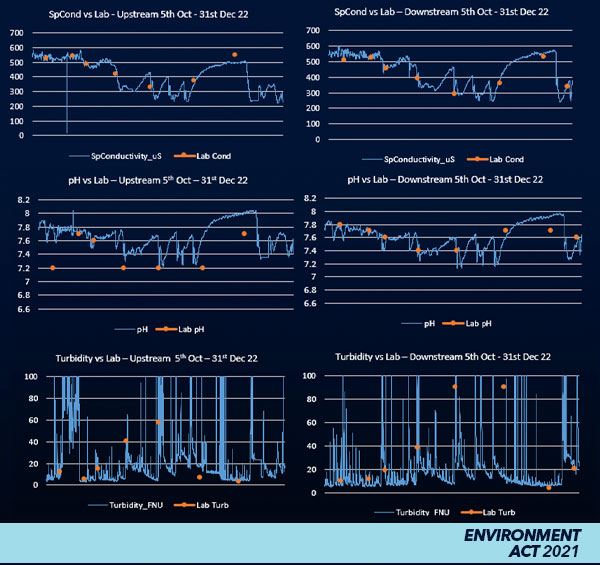
Figure 3. Results of deployed EXO sensors versus grab samples analyzed by laboratory methods. Note that Turbidity exhibited noisy data due to sensor fouling from sediment accumulation.
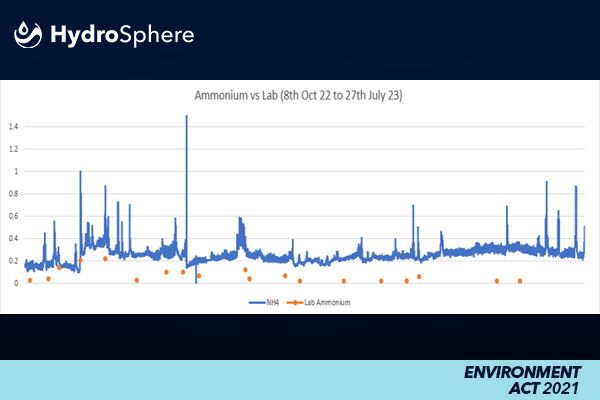
Figure 4. EXO Ammonium ISE field data compared to grab samples analyzed by laboratory methods. The field data was, on average, approximately 0.2 mg/L higher than lab data, exhibiting a vast improvement over the reported sensor accuracy spec (±2 mg/L) and well under the observed accuracy of ±0.5 mg/L in low-ammonium natural environments.
In conjunction with high accuracy, the field data also reflected a significant storm event in which a sewage overflow occurred. On November 3rd, the sewage pumping station’s EDM, or Event Duration Monitor, which alerts to tank overflows, began an alarm that lasted over 24 hours. During the EDM alarm, the deployed sensors measured large increases in turbidity, and most notably, ammonium, a wastewater indicator (Figure 5).
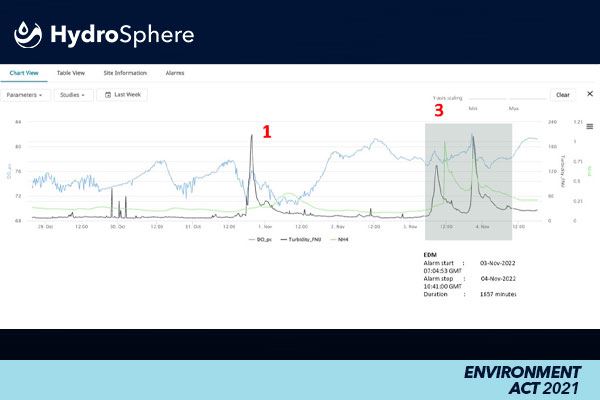
Figure 5. Response of Ammonium ISE during a storm event with EDM alarm in grey.
Previous storm events during which sewage overflows did not occur, and thus did not trigger the EDM, showed increased turbidity that reflected sediment attributed to stormflow, but no increase or minimal increase in ammonium. This deployment data effectively shows the benefits of using deployed EXO sensors, including the Ammonium ISE, for highly accurate compliance monitoring.
Case Study 3:
Monitoring Point: Upstream and Downstream of Final Effluent and CSO
Parameters Measured: Temperature, Conductivity, pH, Dissolved Oxygen, Turbidity, Ammonium
Trial Date: 2023
With a drive towards lower-cost monitoring solutions, Xylem installed two telemetry systems upstream and downstream of a final effluent discharge. Instead of deploying EXO2S sondes with anti-fouling technology, two YSI ProDSS handheld instruments were installed to compare their performance in long-term monitoring to the EXO. Smart alarms were programmed in HydroSphere to alert the team to storm events and increased fouling.
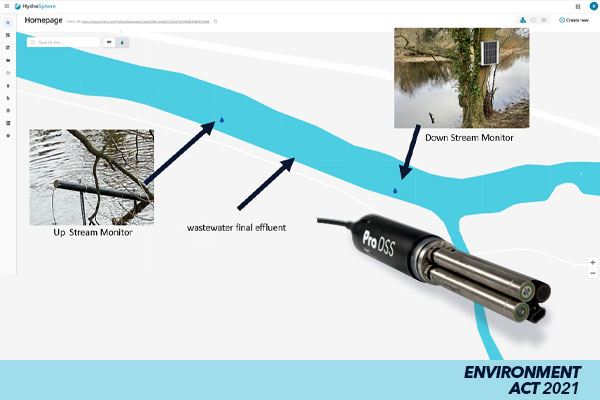
Locations of the upstream and downstream sites relative to the final effluent discharge.
The ProDSS is the industry’s leading field portable meter for water quality and uses the same sensor technology as the EXO. Though the ProDSS is compact and rugged, and was connected to telemetry, it is not designed for deployments and is not capable of anti-fouling, as is the more deployment-suited EXO Sonde.
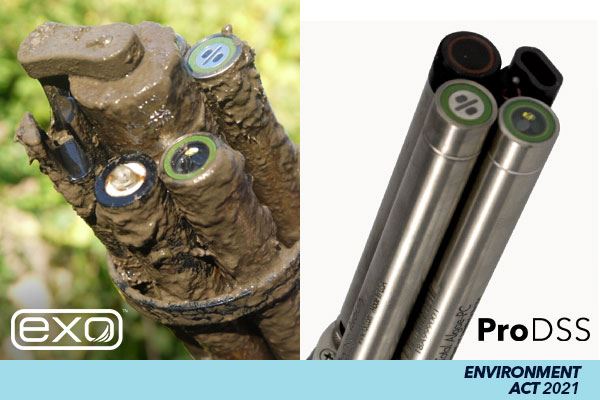
After installation, the water quality data collected was accurate and clearly demonstrated three separate events (Figure 6). The sensor data show a clear difference between the upstream and downstream sites during baseflow due to the effect of the final effluent; the downstream site had overall increased ammonium (#1), conductivity, and turbidity, and lower dissolved oxygen.
In (#2), we see the impact of a rainfall event increasing dilution of the final effluent, resulting in a match in upstream and downstream data. An event further upstream from the catchment was seen in (#3) with both sensors measuring higher turbidity before and after the final effluent.
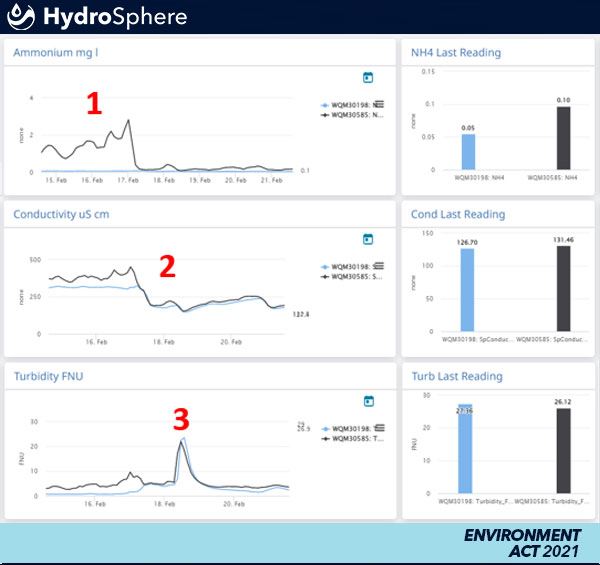
Figure 6. ProDSS data: upstream (blue) versus downstream (black).
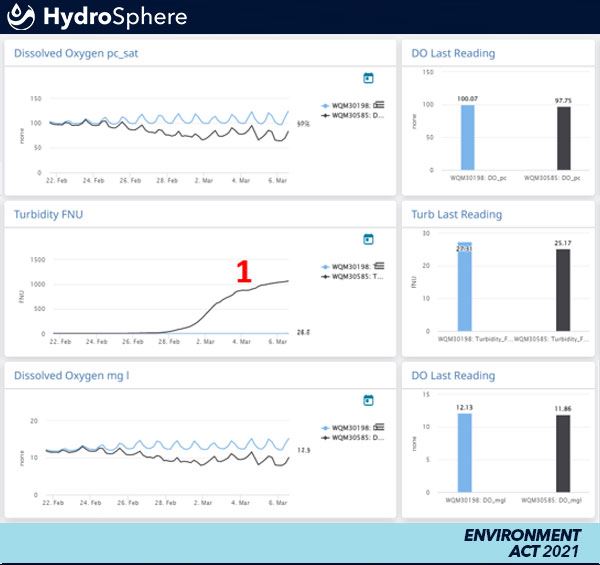
Figure 7. ProDSS data: upstream (blue) versus downstream (black).
In the following weeks, the data reflected another event (Figure 7, #1), however, the measured turbidity at the downstream site continued to increase. The increased turbidity triggered HydroSphere alarms, prompting the team to perform an unplanned service visit to understand the cause.
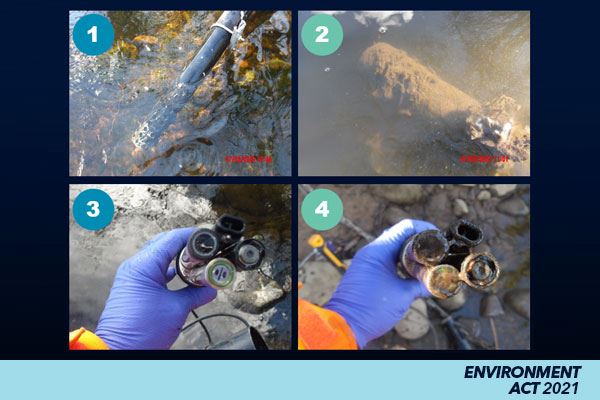
Figure 8. Photos of the downstream ProDSS before (1, 3) and after (2, 4) deployment. Photos 1 and 3 show clean sensors, while photos 2 and 4 show significant fouling. Photos courtesy of IETG.
The reason for the high turbidity values was clear by the state of the ProDSS sensors. The observed storm event had covered the sensors with sediment and debris, and due to the lack of an anti-fouling wiper, the sensors remained occluded, impacting the readings. Manual cleaning of the sensors returned the data to normal but raised doubt on the quality of the collected data following the event.
Although using ProDSS for long-term monitoring has a lower initial equipment cost, the cost to maintain the sensors regularly to clean fouling and the negative impact on the data makes this instrument unsuited for deployments. The ProDSS is designed for handheld, discrete monitoring rather than for unattended, continuous monitoring. Instead, the EXO Sonde is the best instrument for deployment applications, to maintain high data quality, improve anti-fouling, and reduce costs associated with site visits.
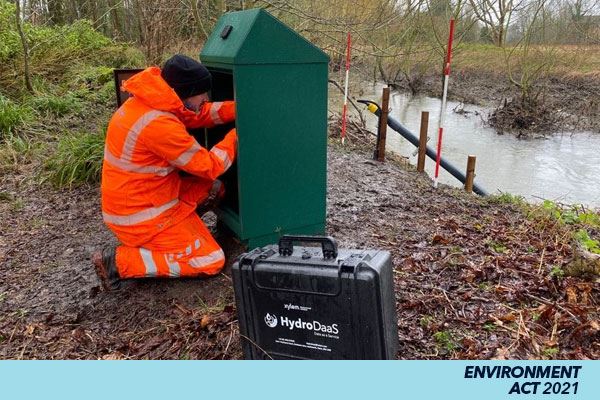
Conclusion
With many of these trials ongoing, the EXO deployments continue to provide water utilities with the data they need to maintain compliance and better manage their water processes. These data demonstrate the effectiveness of using the EXO Ammonium ISE as an indicator of wastewater input—in combination with a full suite of water quality parameters—for long-term monitoring. Combining deployed sensors with telemetry results in valuable insights only possible through access to real-time data, to monitor site status, respond to issues in the field, and view the effects of storm events. Especially when combined with HydroSphere data dashboards and Smart Alarms, Xylem solutions are ideal for water utilities and agencies in the UK concerned with the Environment Act 2021, but also all water quality compliance monitoring in any location!

References:
- ITVX, Video shows 'thousands' of dead fish floating in Oxford canal